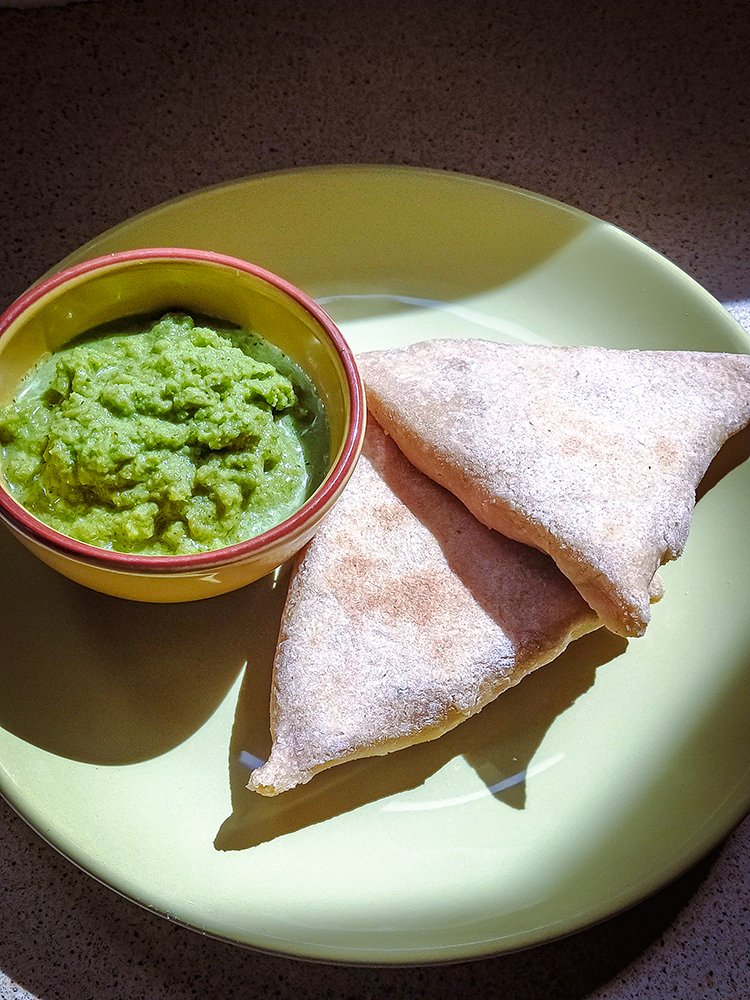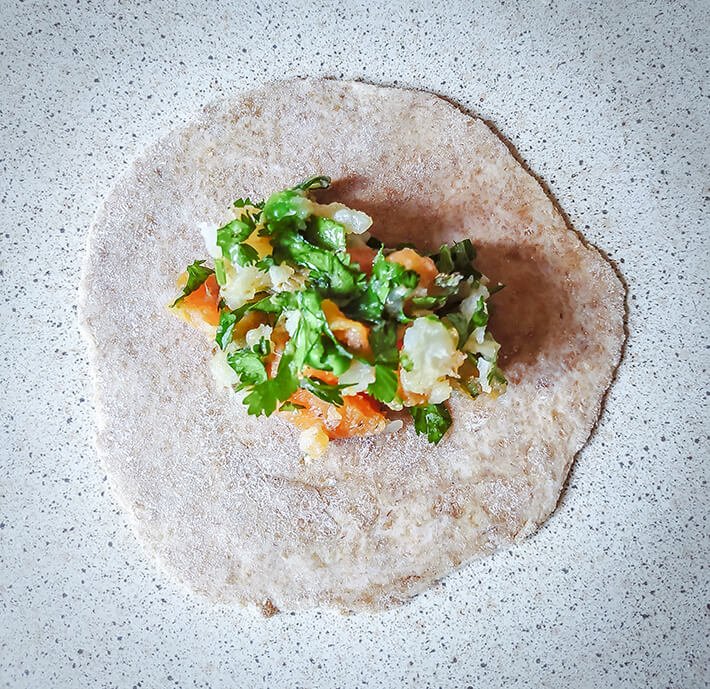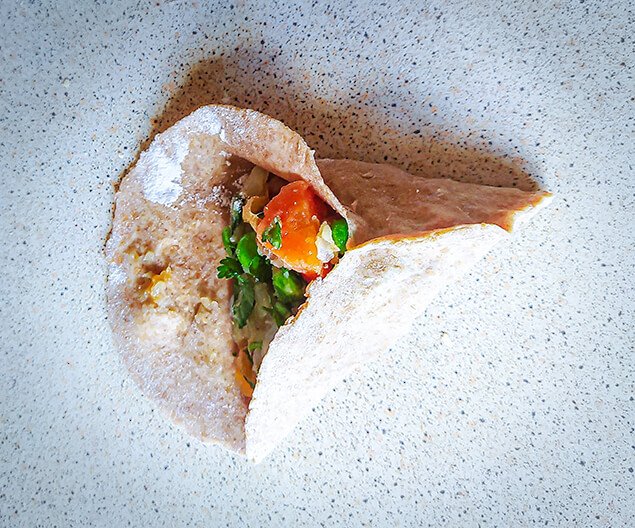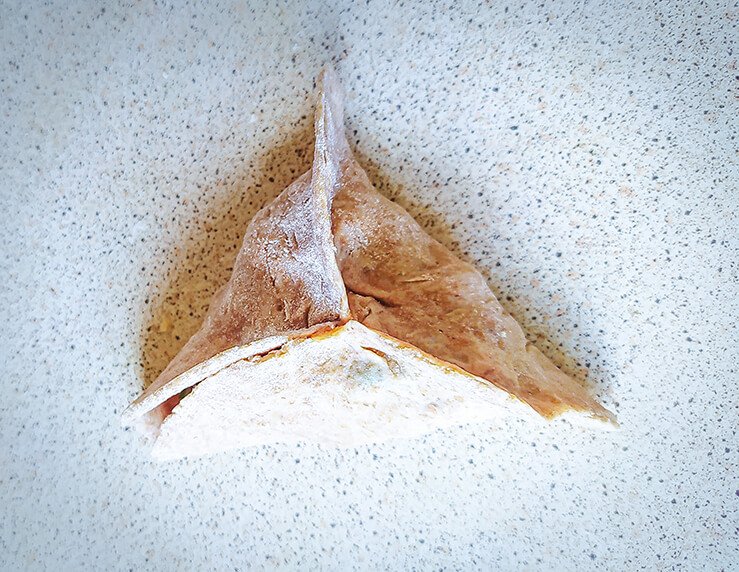Vegetable Samosas
Samosas are delicious triangular pasties that can be prepared with both augmenting and extractive vegetables. In this recipe we combine augmenting carrots and parsnips with extractive celeriac and peas. You could use sweet potatoes and peas, carrots and kale, turnips and asparagus.
Any combination of spices and vegetables can work, so we encourage you to be creative. However, just like in our balanced bowl, it is best to follow the 60:40 ratio when incorporating augmenting and extractive foods because it provides nourishment while balancing all the doshas. The sweet taste of root vegetables calms vata and pitta, while building body tissue and promoting satiety. Bitter and astringent leafy greens balance kapha and assist in cleansing the body.
Serves: 4 people (8 samosas)
Preparation time: 60 minutes
Augmenting and extractive
You'll need
Filling
2 cups chopped vegetables:
1 peeled small parsnip
1 carrot
small handful swede or celeriac
¼ cup fresh peas
⅓ tsp celery seeds
1 tsp caraway seeds
⅓ tsp cinnamon
⅔ tsp mineral salt
1 tbsp ghee
1 tbsp ground coriander
pinch hing
½ cup chopped fresh coriander/cilantro
Dough
1 ½ cup spelt or kamut flour
1 tbsp ghee, preheated in a pan so it is hot but not smoking
⅓ tsp mineral salt
½ cup white basmati rice OR ⅓ cup oat groats or steel cut oats, ground into coarse flour
Extras
1 tbsp ghee for cooking
2 tbsp creme fraiche for serving, optional.
Here's how
Filling
Begin with a large dutch oven or heavy bottomed skillet with lid over medium low heat. Add the ghee. Once melted add the spices and toast slightly, until the aroma is present. Start with the seeds and add the powders toward the end.
Mix in the 2 cups of chopped vegetables and salt, stir to ensure that everything is well blended and coated with the ghee and spices. Then add a little water to about ¼ height of the veggies, cover and cook until soft and all the water has evaporated and the vegetables are soft
Remove from heat and mash. The vegetable mash does not have to be smooth, in fact it can be coarse, leaving most of the vegetables intact.
Stir in the chopped cilantro.
Dough
Mix the flour and salt together.
Stir in the hot ghee and enough water to make soft dough.
Leave it as is for a smooth dough, but if you want more texture, experiment by folding in coarse rice or oat flour.
Let it rest for 15 minutes, covered with a clean towel.
Assembly
Divide the dough into 8 balls. Roll one at a time, keeping the remainder covered while you work.
Lightly flour a clean working surface. Using a rolling pin, roll each one out into circles, about 4 inches/10 cm in diameter.
Place about 2 tbsp filling onto each round and fold into a triangle, as shown in the pictures.
4. Cook the samosas in a preheated cast iron pan in a little ghee until slightly golden for about 5 minutes on each side.
5. Alternatively the samosas can be baked. Preheat the oven to 350F/175C. Lay on a parchment lined baking sheet. Brush with ghee and bake for 16-19 minutes or until golden brown.
6. Serve warm with a little creme fraiche or homemade sauce of choice: try pesto or Nomato sauce. Alternatively, let them cool and include them in your lunchbox.
Tips
This recipe is intended for inspiration, so get creative and experiment with these options. Samosas are a Hale Pule favorite. We have made many versions alternating the dough as well as vegetable mash. Our favourite combination is kamut and rice, followed by spelt and oats, though we also enjoy the smooth dough option. These can also be served with chutney. Enjoy!
Visit our Ayurveda Lifestyle page for kitchen essentials




